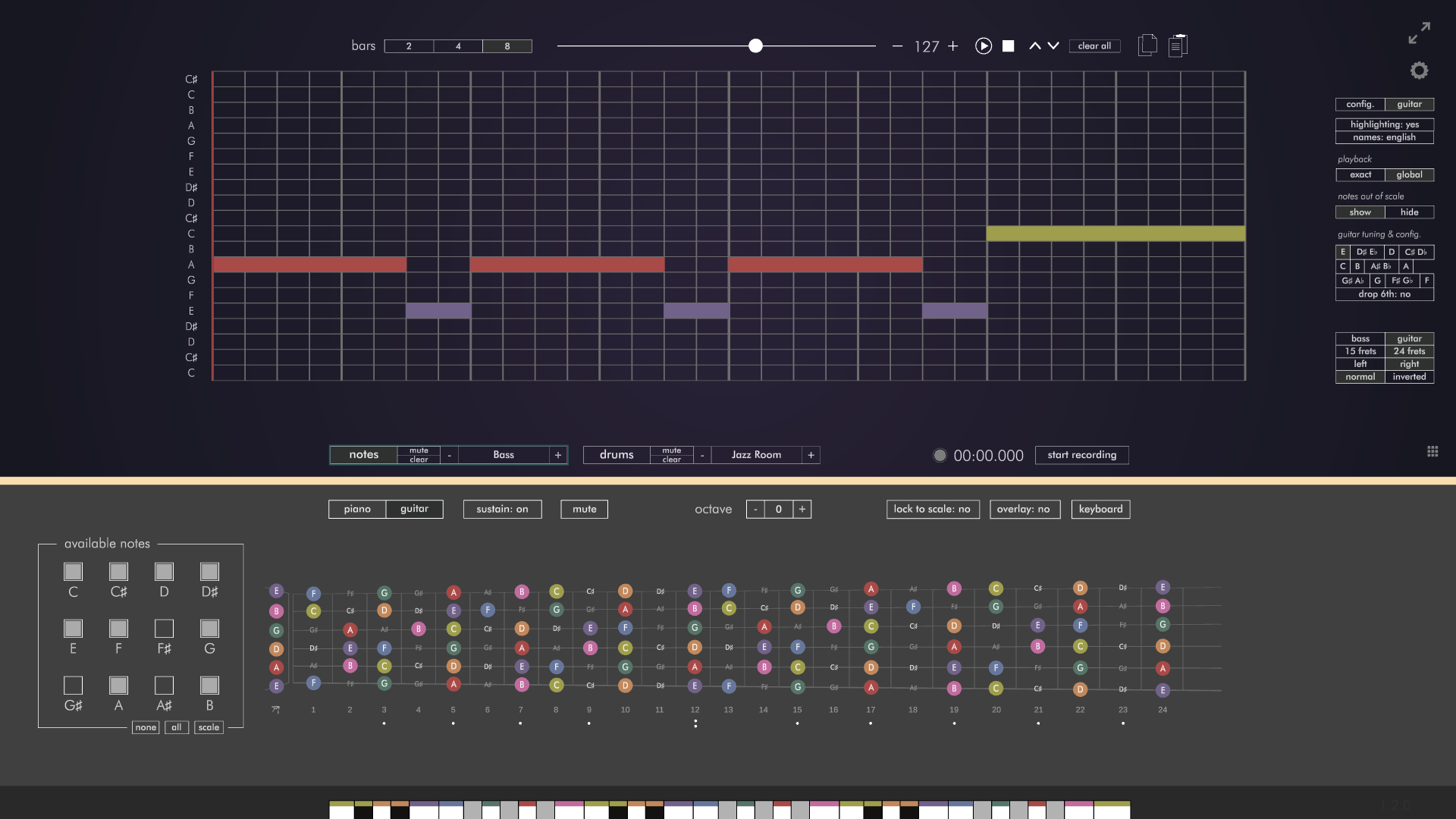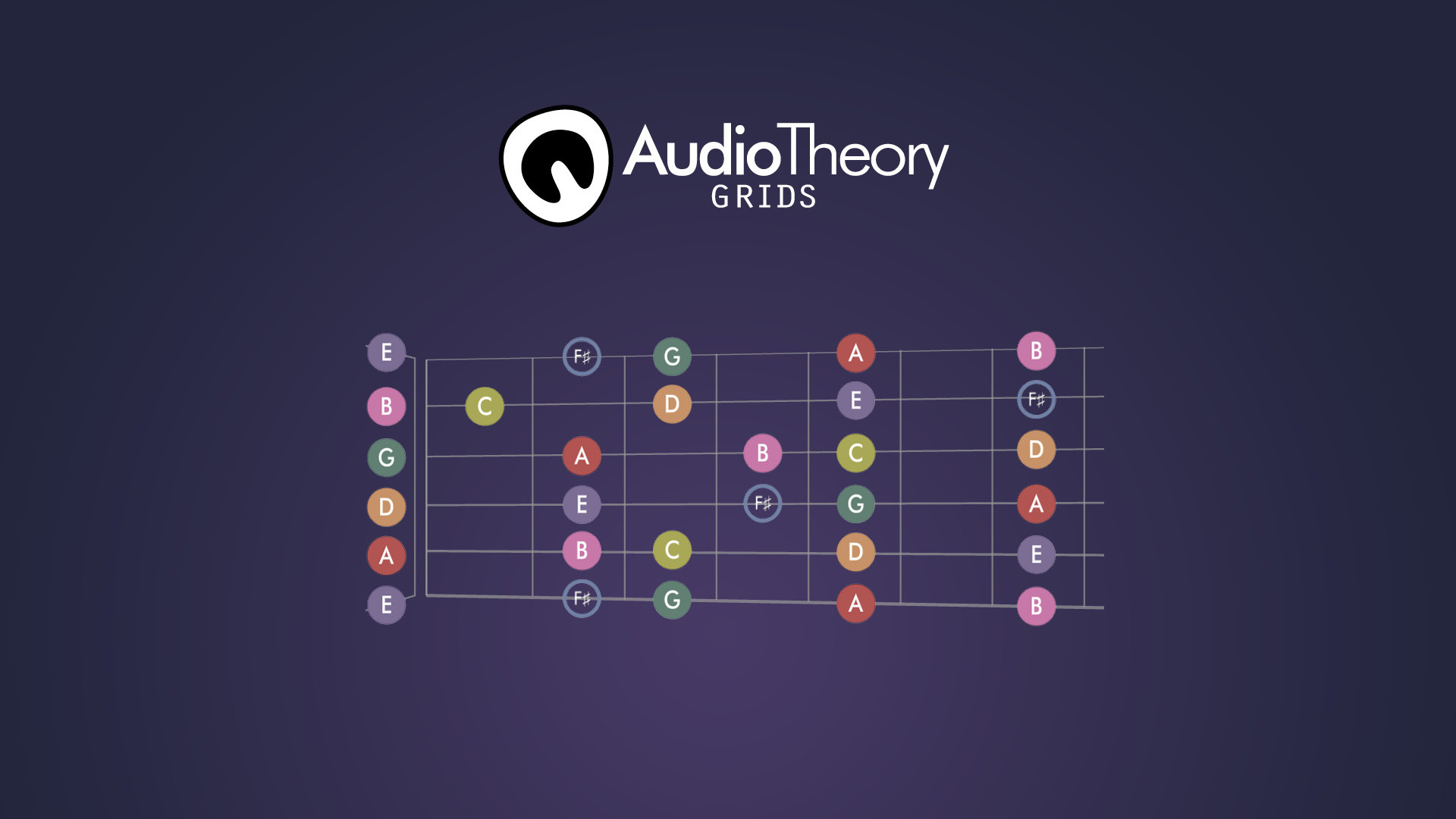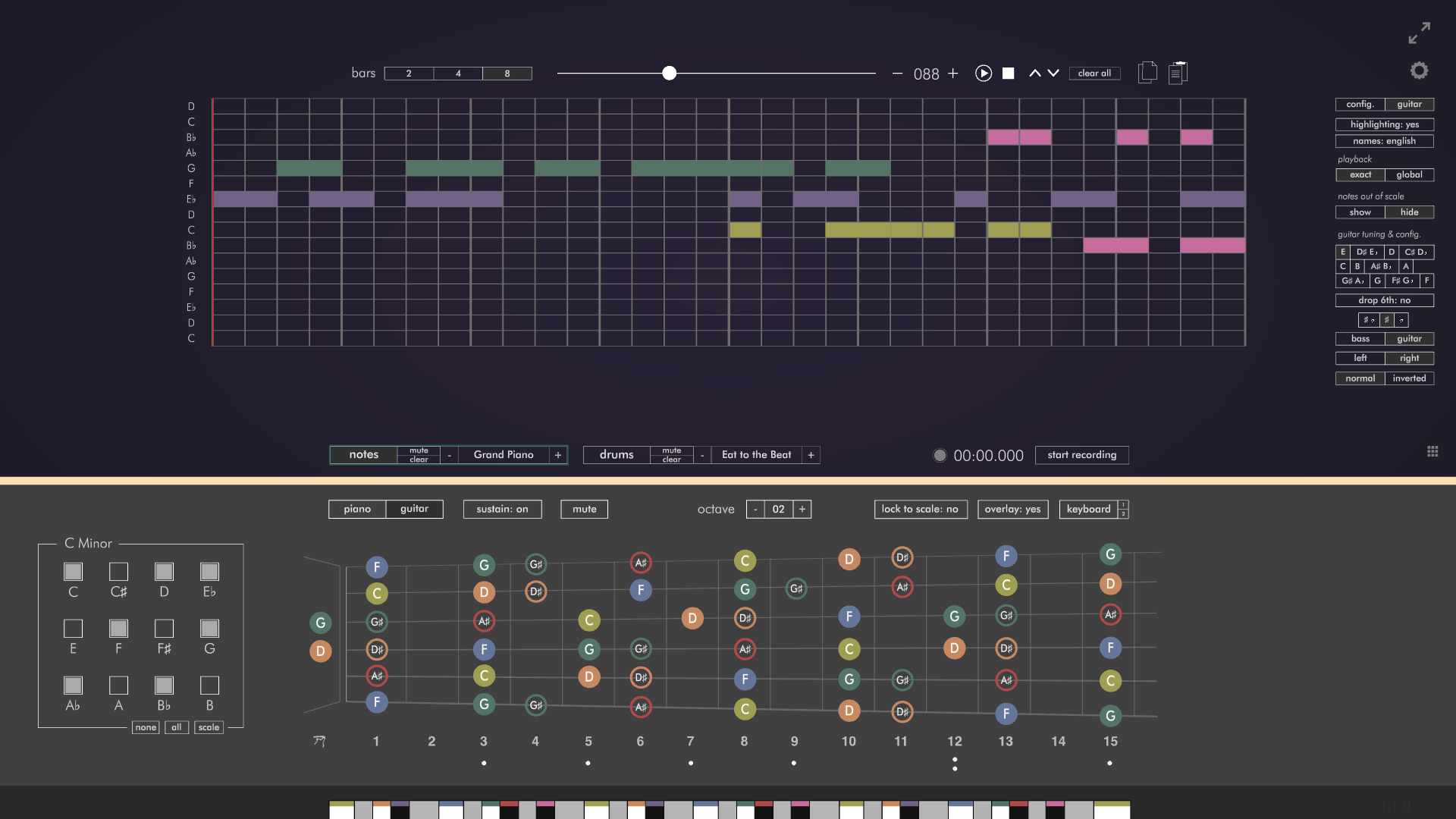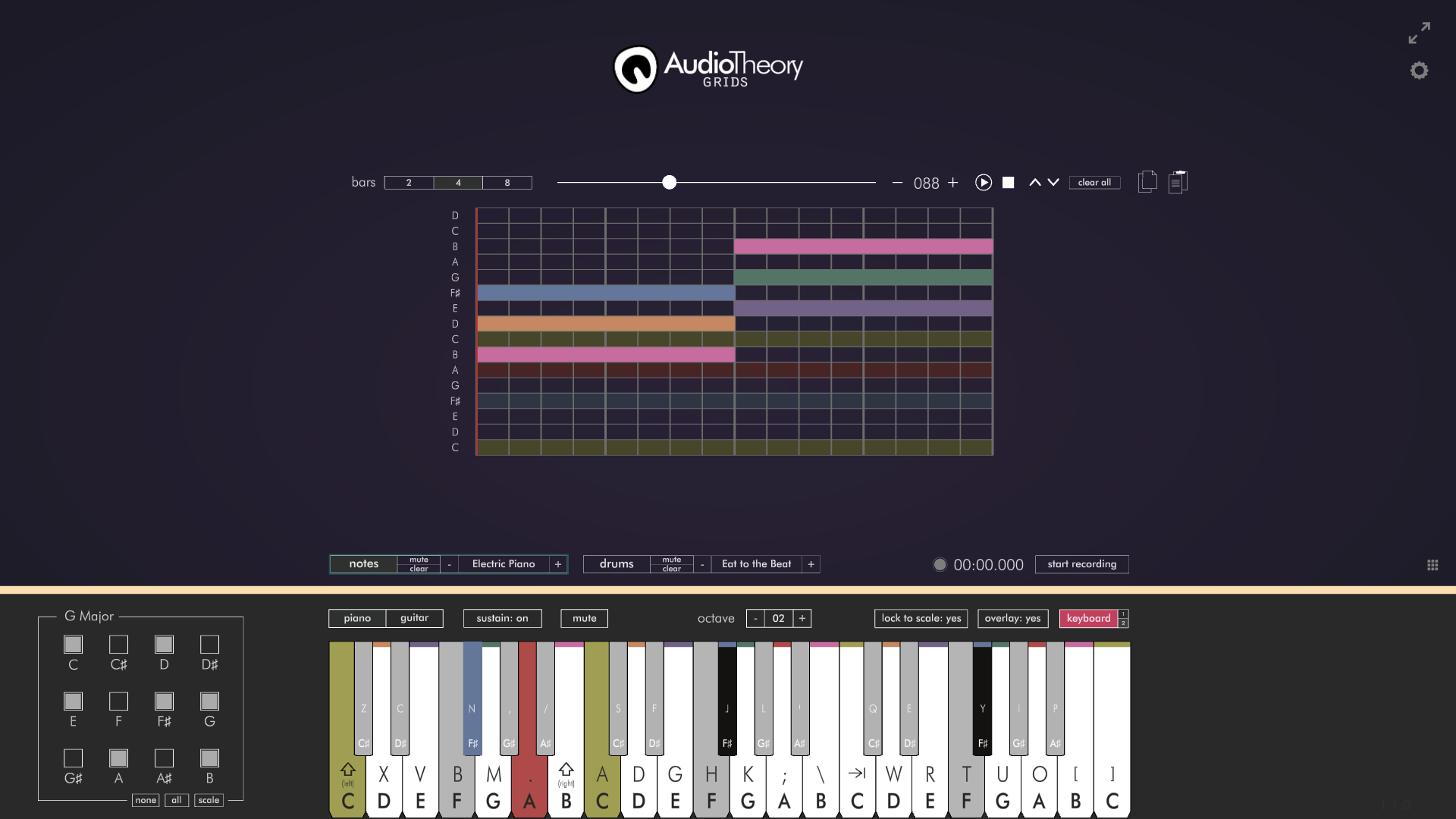AudioTheory Grids 1.2.0 Update

Today is launch day for AudioTheory Piano Keys. This is a brand new piece of software designed to give you real time visual and audio feedback when learning and practicing the piano. I'm super excited to be releasing this, and coincide with the launch there is also a big new update for AudioTheory Grids.
https://store.steampowered.com/app/1513510/AudioTheory_Piano_Keys
[h3]So what's new with AudioTheory Grids?[/h3]
I'm glad you asked. Many features developed externally for AudioTheory Piano Keys and AudioTheory Guitars too are making their way here too, so this new update contains a whole bunch of new features.

[h3]Chromatic highlighting[/h3]
This is the culmination of numerous highlighting enhancements that have been made over the last few updates. The new chromatic highlighting options mean there is full flexibility on how sharp and flat notes highlight not only within a scale preset but also in chromatic mode (using all notes) as well as any custom subsection.
I am confident that this is a much improved solution for how to display sharp and flats. Firstly, two changes to how this previously worked:
- Sharp and flat notes now display with coloured highlighting even when a scale preset is not being used
- The previous sharp and flat settings in the options cog are no more
[h3]New scale library[/h3]
The mini-scale selector has been neatened up, and there's a new look for the fullscreen selector. Minor scales have been split out into their own tab and there's now also a set of Dim scales available.
[h3]New octave selector[/h3]
The octave selector has been revised to better match that of a real-world device. It now starts at 0 and can be increased to +1 or decreased to -1. There is also a new option in the settings to show the MIDI input octave directly in the main view. I'd recommend turning this on if you are using a MIDI device and frequently change the octave directly on the device. This (now labelled as 'input octave') should match the device to ensure highlighting works as expected.
For example: if you increase the octave by +1 on your MIDI controller, then you should set the input octave as +1 too as this will ensure the device continues to highlight the correct octave. Meanwhile the output octave independently sets the pitch of the application software instruments.

[h3]Additional Guitar configuration[/h3]
The guitar view now includes is the option to select a full 24 fretboard diagram as an alternative to the default 15 fret diagram, letting you see two octaves at once. Plus, there's now the option in the settings set the guitar tuning per string (rather than just as a root note).

[h3]DSP Latency Settings[/h3]
I've added in some new optimisations to the app's latency settings (this is the fractional delay between input and playback). The DSP buffer size can now be configured (between 1024 and 32 samples) in the settings, with the idea being that a lower buffer size will result in less latency, but as this requires more CPU power you may incur audio distortions if it's reduced too much.
The buffer also now starts out at a platform-optimised size, meaning latency has been reduced without the need to adjust the settings, however full control is now available to tweak this further.
[h3]Hotkeys[/h3]
Some hotkeys are now in place to optimise control of the app:
Num keys 1–4: quickly swamp note languages
1 – English
2 – Fixed Do solfège
3 – Relative Roman numerals
4 – Movable Do solfège
Ctrl (Windows)/Cmd (Mac) –O: Open preset from file
Ctrl (Windows)/Cmd (Mac) –S: Save preset to file
Ctrl (Windows)/Cmd (Mac) Shift –O: Toggle keyboard overlay view
Ctrl (Windows)/Cmd (Mac) Shift –M: Toggle mute
Ctrl (Windows)/Cmd (Mac) –K: Toggle QWERTY keyboard input
Ctrl (Windows)/Cmd (Mac) –L: Toggle lock to scale

Plus there's a few more miscellaneous bug fixes and tweaks that have made their way into this version of AudioTheory Grids. Highlights include:
- Modal scale backgrounds now correctly update in the mini popup
- Fix for lines not correctly transposing when shifted up or down
- Fix for a display bug where icons in the bottom left would incorrectly overlay at a reduced width
- Sustain state now correctly saves
- Fix for colour overlap when two notes next to each other were both pressed
- Application now properly checks to resize if swapping from a 16:9 windowed to 16:10 fullscreen view
- Fix for highlighting issue when using MIDI and QWERTY input together
And that concludes today's update. Thanks for reading.
Fraser


